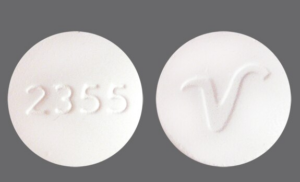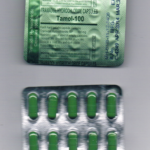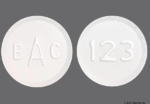Butalbital is categorized as an intermediate-acting barbiturate. It is frequently utilized in combination with other drugs, such as paracetamol (commonly known as acetaminophen) in formulations like Butalbital/acetaminophen or in combination with aspirin, primarily for the relief of pain and headaches. Some formulations of Butalbital, when combined with codeine, have received FDA approval for the treatment of tension headaches. It’s noteworthy that Butalbital shares the same chemical formula as talbutal but possesses a distinct molecular structure, specifically characterized as 5-allyl-5-isobutylbarbituric acid.
Butalbital Combinations:
Butalbital is available in various combinations, including:
- Butalbital/acetaminophen (paracetamol) combinations, sold under trade names like Axocet, Bucet, Bupap, Cephadyn, Dolgic, Phrenilin, Forte, and Sedapap.
- Butalbital, paracetamol (acetaminophen), and caffeine combinations, available under trade names like Fioricet, Esgic, Esgic-Plus, Orbivan, Fiormor, Fiortal, Fortabs, and Laniroif.
- Butalbital, paracetamol (acetaminophen), caffeine, and codeine phosphate combination, marketed as Fioricet#3 with Codeine.
- Butalbital and aspirin combination, known as Axotal.
- Butalbital, aspirin, and caffeine combination, sold as Fiorinal.
- Butalbital, aspirin, caffeine, and codeine phosphate combination, available as Fiorinal#3 with Codeine.
- Ergotamine tartrate, caffeine, butalbital, and belladonna alkaloids combination, known as Cafergot-PB.

Butalbital Side Effects
Side effects associated with butalbital use are somewhat unpredictable, but generally, this drug is well-tolerated. Commonly reported side effects may diminish over time with continued use and include:
- Dizziness
- Respiratory depression (impaired breathing)
- Drowsiness
- A sensation of intoxication
- Light-headedness
- Nausea
- Sedation
- Euphoria
- Severe impairment of judgment
- Diarrhea
- Memory loss
- Constipation
Rare side effects include Stevens–Johnson syndrome, which is a severe adverse reaction to barbiturates, and anaphylaxis, a severe allergic reaction.
It’s crucial to note that the risk and severity of these side effects significantly increase when butalbital or butalbital-containing medications are combined with other sedatives such as ethanol, opiates, benzodiazepines, or antihistamines. In particular, the combination of butalbital, especially with other sedatives like opioids, can lead to life-threatening respiratory depression and potentially fatal outcomes. The use of inhibitors of the hepatic enzyme CYP3A4 may also heighten the risk, severity, and duration of side effects. Many drugs and even certain foods like grapefruit and blood oranges inhibit this enzyme. Additionally, taking butalbital-based medications concurrently with some other drugs may intensify the side effects of the other medication.
Barbiturates Have the Potential to Lead to Addiction
Barbiturates have the potential to lead to addiction, with tolerance, psychological reliance, and physical dependence being more likely to develop after extended use of high barbiturate doses. Typically, barbiturate addicts consume an average daily dose of around 1500 mg.
As tolerance builds, individuals require higher amounts to achieve the same level of intoxication, but the tolerance for a potentially lethal dose does not increase by more than a factor of two. Consequently, the gap between an intoxicating dose and a lethal one narrows.
If alcohol is combined with barbiturates, the lethal dose becomes considerably lower. Notably, significant withdrawal symptoms such as seizures and delirium can arise within 16 hours of abrupt cessation, lasting up to 5 days.
Over approximately 15 days, the severity of withdrawal symptoms gradually diminishes. Treating barbiturate dependence involves a cautious and gradual reduction of the drug. Various withdrawal strategies can be employed, including one that starts at the patient’s usual dosage and systematically decreases the daily amount based on the patient’s tolerance.
Butalbital Warnings
Butalbital can cause dependence or addiction. Mixing with alcohol, benzodiazepines, and other CNS-depressants increases the risk of intoxication, increases respiratory depression, and increases liver toxicity when in combination with paracetamol (acetaminophen). Use of butalbital and alcohol, benzodiazepines, and other CNS-depressants can contribute to coma, and in extreme cases, fatality.
Butalbital possesses addictive qualities and has the potential for abuse. Therefore, it is not advisable for prolonged use of this product.
Hepatotoxicity
Acetaminophen has been linked to cases of acute liver failure, sometimes necessitating liver transplants and, in severe cases, resulting in death. Most instances of liver injury occur when acetaminophen is taken in doses exceeding 4000 milligrams per day, often involving the simultaneous use of multiple acetaminophen-containing products. Excessive acetaminophen consumption can be deliberate for self-harm or unintentional when patients seek additional pain relief or unknowingly consume other products containing acetaminophen.
The risk of acute liver failure is higher in individuals with underlying liver conditions and those who consume alcohol while using acetaminophen.
Patients should be instructed to check product labels for the presence of acetaminophen or APAP and avoid using more than one product containing acetaminophen. They should also be advised to seek immediate medical attention if they ingest more than 4000 milligrams of acetaminophen per day, even if they feel well.
Serious Skin Reactions
On rare occasions, acetaminophen may trigger severe skin reactions such as acute generalized exanthematous pustulosis (AGEP), Stevens-Johnson Syndrome (SJS), and toxic epidermal necrolysis (TEN), which can be fatal. Patients should be educated about the signs of these serious skin reactions, and if any skin rash or hypersensitivity symptoms appear, they should discontinue the medication promptly.
Hypersensitivity/Anaphylaxis
There have been reports, after the product’s market release, of hypersensitivity and anaphylaxis associated with the use of acetaminophen. Clinical manifestations may include facial, mouth, and throat swelling, breathing difficulties, urticaria, rash, itching, and vomiting. In rare instances, life-threatening anaphylaxis necessitating emergency medical attention has been reported. Patients should be advised to discontinue Esgic® Capsules immediately and seek medical care if they experience any of these symptoms. Esgic® Capsules should not be prescribed to patients with an acetaminophen allergy.
Pharmacokinetics of Butalbital
Butalbital is well-absorbed from the gastrointestinal tract and is expected to distribute throughout most tissues in the body. Barbiturates, including butalbital, have the ability to appear in breast milk and readily cross the placental barrier. They bind to both plasma and tissue proteins to varying degrees, with binding increasing as the drug’s lipid solubility increases.
The primary route of elimination for butalbital is through the kidneys, accounting for 59% to 88% of the administered dose, either as unchanged drug or metabolites. Its plasma half-life is approximately 35 hours. In the urine, excreted products include the parent drug (about 3.6% of the dose), 5-isobutyl-5-(2,3-dihydroxypropyl) barbituric acid (about 24% of the dose), 5-allyl-5 (3-hydroxy-2-methyl-1-propyl) barbituric acid (about 4.8% of the dose), compounds with the barbituric acid ring hydrolyzed leading to the excretion of urea (about 14% of the dose), as well as unidentified substances. Among the materials excreted in the urine, 32% is in a conjugated form.
The in vitro plasma protein binding of butalbital is approximately 45% over the concentration range of 0.5 to 20 mcg/mL. This falls within the reported range of plasma protein binding (20% to 45%) observed with other barbiturates like phenobarbital, pentobarbital, and secobarbital sodium. Importantly, the plasma-to-blood concentration ratio is nearly equal, indicating that butalbital is distributed fairly evenly between plasma and blood cells.
Pregnancy
Teratogenic Effects
Pregnancy Category C
Animal reproduction studies have not been conducted with this combination product. It is also not known whether butalbital, acetaminophen and caffeine can cause fetal harm when administered to a pregnant woman or can affect reproduction capacity. This product should be given to a pregnant woman only when clearly needed.
Nonteratogenic Effects
Withdrawal seizures were reported in a two-day-old male infant whose mother had taken a butalbitalcontaining drug during the last two months of pregnancy. Butalbital was found in the infant’s serum. The infant was given phenobarbital 5 mg/kg, which was tapered without further seizure or other withdrawal symptoms.
Nursing Mothers
Caffeine, barbiturates and acetaminophen are excreted in breast milk in small amounts, but the significance of their effects on nursing infants is not known. Because of potential for serious adverse reactions in nursing infants from butalbital, acetaminophen and caffeine, a decision should be made whether to discontinue nursing or to discontinue the drug, taking into account the importance of the drug to the mother.
Pain Medications, Pain Relief, and Pain Management






